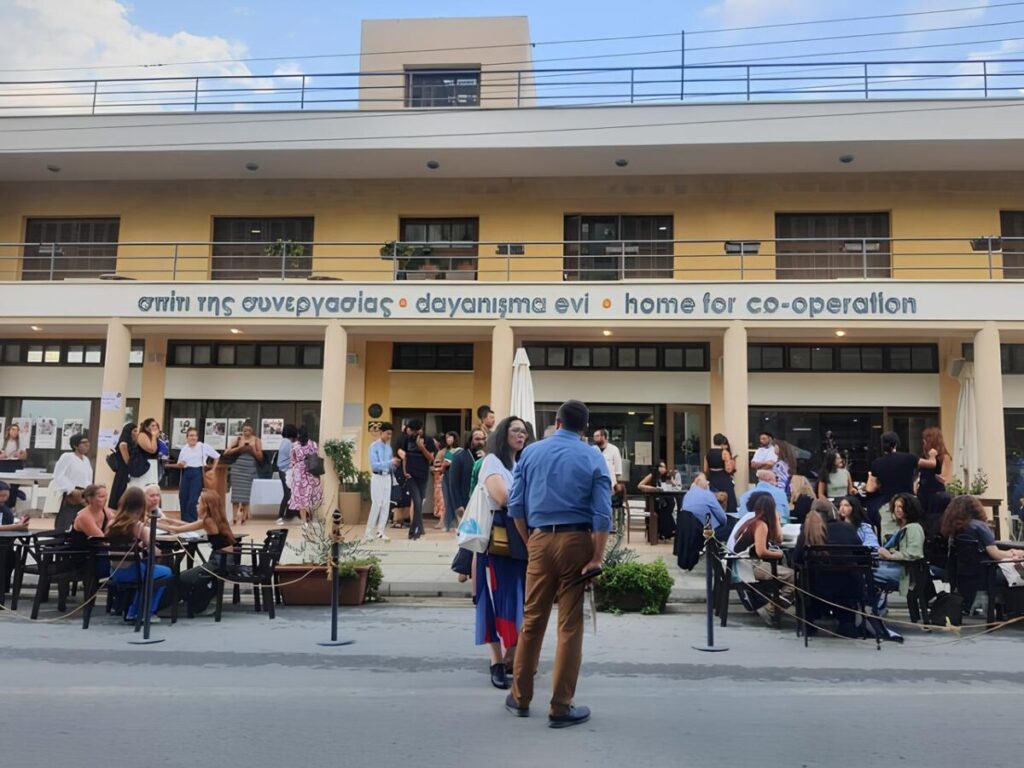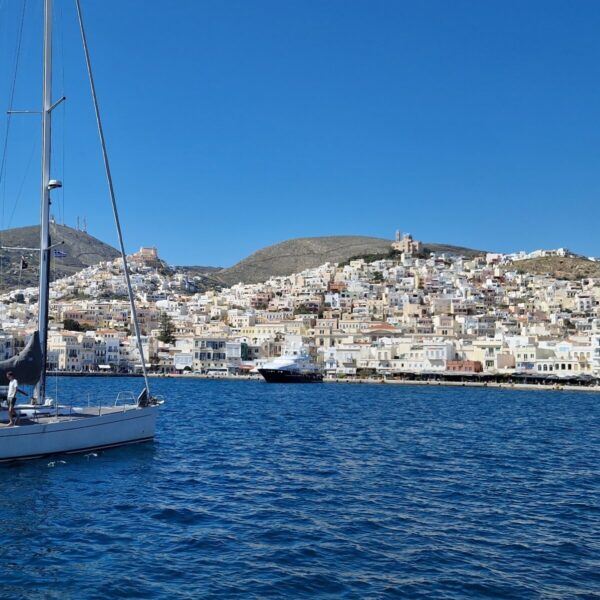Coexisting is not a given. It is a patient, discreet, sometimes invisible work. In the shadow of great fractures, residents, neighbors, and believers find ways to live together without merging. Whether around a shared staircase, a shared song, or a religious celebration, another way of creating society is invented daily. A way that speaks of bonds, thresholds, respect — and a certain Mediterranean spirit.
This article is a summary of 3 articles published in 22-med, available in the 11 languages used on the site.
The Rom neighborhood of Istanbul facing relocation rumors : Tuğba Öcek - Turkey
A peace zone transcends the demarcation line : Andri Kounnou - Cyprus
Syros: the island of religious unity : Kelly Fanarioti - Greece
In Istanbul, a Rom neighborhood questions its future in the face of uncertain urban renovation. In Nicosia, a city divided in two, artists and citizens weave bridges in the neutral zone. On the Greek island of Syros, Catholics and Orthodox Christians live their traditions side by side. Between threats, memory, and ordinary coexistence, these narratives express the complexity of living together in the Mediterranean, and the precious, sometimes fragile forms it can take. These three Mediterranean stories illustrate how one can share a neighborhood, a city, a faith — without necessarily merging them. They also show that living together is less a state than a balance to be built: day after day, in the face of uncertainties.
A community between anchoring and threat

In Kuştepe, a Rom neighborhood embedded in the urban fabric of Istanbul, houses brush against each other, stairs wind around, water overflows into the streets, and cats roam freely. People play, cook, call out to each other, and give flowers in the streets. It is a space inhabited, both socially and physically. Yet, this daily life is now suspended by an urban renovation project.
Officially, the Şişli municipality promises an on-site redevelopment, intended to improve living conditions without forced relocation. But in a country marked by the precedents of Sulukule or Fikirtepe — neighborhoods razed, communities displaced, concrete without memory — the promise raises more concern than hope.
“I am a tenant. I cannot afford to rent elsewhere. If we are evicted, I have nowhere to go,” says Asya, a mother of three. Others, older, still dream of a clean house, a decent bathroom, a room for each child. These ordinary aspirations come into tension with the fear of losing everything.
The neighborhood is also crossed by administrative uncertainties: shared or nonexistent property titles, unclear legal statuses, division of land among several public entities. For Okan Kemancı, an actor and long-time resident, “neighbors still help each other. Children invent games with chalk and cushions. This environment is vital for creativity. Kuştepe must not end up like Fikirtepe.” It is indeed a way of being together, a social fabric, that is at stake.
In Cyprus, a neutral zone to rebuild the common
850 kilometers to the south, in Nicosia, another form of border weighs on daily life: the green line, which has divided the island since 1974. At the heart of this separation, the House of Cooperation, located in the former Ledra Palace hotel, serves as a counter-space. For over a decade, it has hosted workshops, concerts, and educational projects where Greek and Turkish Cypriots meet.
“It is one of the few places on the island where people of all backgrounds can meet without intermediaries, without having to erase who they are,” explains Maria Zenio, a board member. The House does not deny the division but works with it. It offers a space to invent a shared memory, a culture of peace.

Among the living symbols of this regained porosity, the bicommunal choir brings together amateur musicians from both communities. It is here that Latife, a Turkish Cypriot, met Orestis, a Greek Cypriot — her future husband. Their story was woven between two checkpoints, two languages, two memories. “We would go to the crossing point, each from our side, take a chair, and eat face to face, separated by the barrier,” she recalls.
The marriage symbolically abolished the line. “We now live together, we go to see Latife's family on the other side. What unites us is stronger than what divides us,” says Orestis. Through these intimate narratives, the reconciliation project takes shape. Even if not everyone shares this vision, even if the wounds remain fresh.
In Syros, sharing religion
At first glance, Syros seems far removed from these tensions. Here, in the heart of the Cyclades, there is no talk of territorial division or threat of eviction. Yet, the living together is anything but obvious: the island brings together two Christian traditions — Orthodox and Catholic — historically separated elsewhere, but in constant dialogue here.
Religious coexistence is not limited to polite tolerance. It manifests in shared festivals, mixed marriages, and bells ringing in unison. “Fifty years ago, a Catholic would not go into an Orthodox shop. Today, we celebrate Easter together,” recounts Nikos Solaris, a traditional dance teacher. This shift did not happen on its own: it is the couples, families, and teachers who have daily forged the conditions for this understanding.
In schools, children grow up in this dual culture. “They understand very early that there is not just one faith. They participate in the festivals of both traditions, without conflict,” emphasizes Nikos Roussos, a music teacher. He stresses the importance of shared rites, such as the joint celebration of Easter, decided by both religious hierarchies. “What unites us is more important than what divides us.”
The example of Syros is not spectacular. It does not carry the symbolic weight of Nicosia, nor the tensions of Istanbul. But perhaps that is what makes it precious. It shows that coexistence, far from being naive or passive, is cultivated and decided. It rests on gestures, presences, habits built on mutual respect.
The fragile ties of the common
Each of these stories explores a facet of the Mediterranean living together. Kuştepe reminds us that urban space, when reshaped without its inhabitants, can become a machine for exclusion. Nicosia proves that even at the heart of separation, bridges can be built, especially when they rest on art, language, and hospitality. And Syros teaches us that unity can be built without erasing differences, by embedding them in celebration and daily life.
But these balances remain fragile. In Istanbul, the arrest of the mayor in March 2025 has suspended the project, leaving residents in waiting. In Cyprus, the crossing points are still governed by precarious agreements. In Syros, religious harmony could be threatened if politics were to intervene. Nothing is ever guaranteed.
What these territories have in common is the way they each defend a certain idea of cohabitation: not a fusion, but a capacity to live side by side, to respond to each other, to adjust. A neighborhood, a city, an island: all places where the possibility of inhabiting together a world crossed by borders is played out.

Cover photo: From the port of Ermoupolis, two emblematic churches of Syros can be seen: on the left, the Catholic Cathedral of Saint George and on the right, the Orthodox Church of the Resurrection of Christ © Kelly Fanarioti
